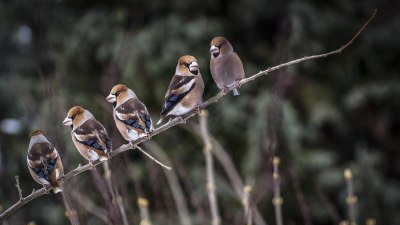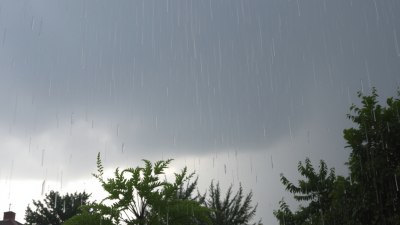If They Feel Like False Spring, Believe Them
Explore the subtle warning signs of false spring and why recognizing them is crucial for gardeners and nature enthusiasts.

Image by Freepik
False spring refers to a deceptive period of warm weather in late winter or early spring that mimics the arrival of true spring. During this time, plants may begin to break dormancy, trees may start to bud, and animals may become more active, all under the illusion that the harshness of winter has passed. However, these temporary warm spells are often followed by a return of freezing temperatures and harsh conditions, which can cause significant damage to the revived flora and fauna. Understanding and respecting the signs of false spring can help gardeners, farmers, and nature lovers prepare and protect their environments from its damaging effects.
The phenomenon of false spring is more than just an occasional meteorological curiosity; it holds profound implications for ecology, agriculture, and even local economies. As climate patterns shift and become more unpredictable, the frequency and intensity of false spring events are likely to change, making awareness and preparedness even more critical. The consequences of ignoring false spring warnings include crop losses, increased vulnerability of native plants, and disrupted animal behaviors, all of which ripple through ecosystems and human communities alike.
What Causes False Spring?
False spring is primarily caused by temporary shifts in weather patterns that bring unseasonably warm temperatures before the end of the winter season. These warm periods can be triggered by various atmospheric phenomena, such as a strong southerly flow of warm air, shifts in the jet stream, or localized weather abnormalities. Despite the warmth, the underlying seasonal cycle has not progressed sufficiently to sustain the biological changes initiated by this early warmth.
During a false spring, solar radiation increases and temperatures rise, stimulating biophysical responses from plants and animals. Trees may begin to swell buds, flowers may start blooming, and migratory birds may arrive early or awaken from hibernation. However, these responses are based on environmental cues that deceptively suggest the full arrival of spring, which is later contradicted when cold snaps or freezes return.
Identifying the Signs of False Spring
Recognizing false spring involves careful observation of both weather patterns and biological signals. Some common indicators include a sudden, short-lived increase in temperatures that is inconsistent with long-term forecasts or historical climate data. Weather stations may report several consecutive days in the 60s or 70s Fahrenheit, only to see a sharp drop back into freezing temperatures shortly after.
Biologically, plants that begin to leaf out, flowers that bloom prematurely, and early insect activity are telltale signs. For example, red maple trees may display bright red blossoms during a false spring, or woodland wildflowers might bloom weeks ahead of their usual schedule. Animals such as frogs might begin calling, while some birds might start nesting activities earlier than normal. However, the critical hallmark of false spring is the recurrence of frost or cold weather after these early spring signals have appeared.
Why False Spring Matters to Gardeners
For gardeners, false spring can be a source of frustration and loss. Warm spells can prompt gardeners to start planting early or encourage perennials and bulbs to grow prematurely. If cold weather returns, these plants are at risk of frost damage, which can kill new shoots, damage flowers, or stunt growth for the season. Vegetable crops like tomatoes, peppers, and cucumbers are particularly vulnerable.
One way to mitigate the risks is to monitor weather forecasts closely and delay planting or pruning until the likelihood of freezing temperatures has passed. Using protective measures such as frost cloths or cold frames can also shield sensitive plants during these vulnerable periods. Understanding the patterns of false spring in a specific region, possibly through historical weather data, can inform better planning and reduce damage.
Impact of False Spring on Agriculture
Agriculture is deeply affected by false spring events, as premature awakening of crops can lead to yield reductions or crop failure. Fruit trees, such as apple, cherry, and peach trees, commonly suffer damage to blooms and young fruit from late frosts following a false spring. Such damage undermines the productivity of orchards and can reduce the economic viability of farming operations.
Farmers often rely on a predictable transition from winter to spring to schedule planting, pruning, and other fieldwork. False spring throws a wrench into this predictability, potentially causing over-eager planting or pruning that must be redone or that results in loss. In commercial agriculture, where timing is critical to meeting market demands, these disruptions can have far-reaching effects on supply chains and commodity prices.
The Ecological Consequences of False Spring
Beyond human concerns, false spring has significant ecological impacts. Early blooming due to warm spells can desynchronize relationships between plants and their pollinators. If insects that pollinate flowers have not yet emerged or are delayed due to subsequent cold, the flowers may not be pollinated effectively, resulting in reduced seed production and potentially altering plant population dynamics.
Similarly, animals that rely on seasonal cues for breeding may face challenges if their timing does not align with food availability. For example, birds that nest too early may have chicks when insect populations are still scarce due to returning cold weather, decreasing offspring survival rates. This temporal mismatch can affect the survival and reproductive success of various species throughout the food web.
How Climate Change Influences False Spring
Climate change adds complexity to the false spring phenomenon. Warmer average global temperatures can increase the frequency of unseasonably warm spells during winter and early spring. This, in turn, may lead to more instances where plants and animals are deceived into responding prematurely to seasonal signals.
However, the variability in weather patterns also means that harsh cold snaps can still occur after these early warm periods, potentially intensifying the damage caused by false spring. Furthermore, climate change can shift the timing of seasons overall, disrupting established ecological cycles and making it more challenging for species to adapt.
Strategies for Adapting to False Spring
Adapting to the challenges posed by false spring requires a multi-faceted approach. For gardeners and farmers, investment in frost protection techniques, choosing resilient plant varieties, and adjusting planting schedules based on evolving climate patterns are practical steps. Utilizing local knowledge and historical climate records can improve decision making.
On a broader scale, land managers and ecologists are exploring ways to maintain ecosystem resilience by promoting species and habitats that can better withstand fluctuations. Monitoring programs that track phenological changes—such as flowering times and animal migrations—provide valuable data to anticipate and mitigate false spring impacts.
Traditional Wisdom and Modern Science
Indigenous peoples and traditional agricultural communities have long recognized the signs of false spring and developed customs to hedge against its risks. Observations of specific plant and animal behaviors, combined with local weather patterns, guide planting and harvesting activities.
Modern science builds upon this foundation by using advanced tools such as remote sensing, predictive modeling, and detailed phenological databases. Integrating traditional ecological knowledge with scientific insights fosters more robust adaptive strategies that honor cultural heritage while addressing contemporary challenges.
Encouraging Observation and Community Engagement
Encouraging local communities to actively observe and record signs of false spring can raise awareness and inform regional responses. Citizen science initiatives that gather data on bloom times, frost events, and wildlife activity engage people directly with their environment, promoting stewardship and informed decision-making.
Community gardens, schools, and conservation groups can play pivotal roles in disseminating information about false spring, sharing best practices, and building networks of support to manage its effects. This collaborative approach strengthens resilience at a grassroots level, fostering healthier ecosystems and more sustainable human-nature relationships.
Technological Tools for Monitoring False Spring
Technological advancements provide new opportunities to monitor and understand false spring phenomena. Weather stations equipped with real-time sensors can detect rapid temperature changes, while satellite imagery helps track vegetation changes across landscapes. Phenocams, cameras focused on natural scenes to track seasonal progress, offer visual data that complement environmental measurements.
Mobile apps and online platforms allow individuals and researchers to input and access phenological data, facilitating timely alerts about potential false spring events. These tools empower users with actionable insights to protect plants, animals, and agricultural interests effectively.
Conclusion: Respecting the Lessons of False Spring
False spring serves as a critical reminder that nature’s timing is delicate and that premature signals can have lasting repercussions. By believing the warnings these early warm periods present—when plants start to bud and animals become active only to face renewed cold—humans can better prepare and safeguard the natural world and their livelihoods.
Respecting false spring means valuing observation, harnessing knowledge—both traditional and scientific—and maintaining flexibility in human activities that depend on seasonal cycles. In an era of changing climates and unpredictable weather, such respect transforms from mere precaution into an essential practice for survival and sustainable coexistence.
Therefore, next time the warmth of a false spring invites you to celebrate early blooms or budding leaves, remember to trust that sense of caution it conveys. If they feel like false spring, believe them.











